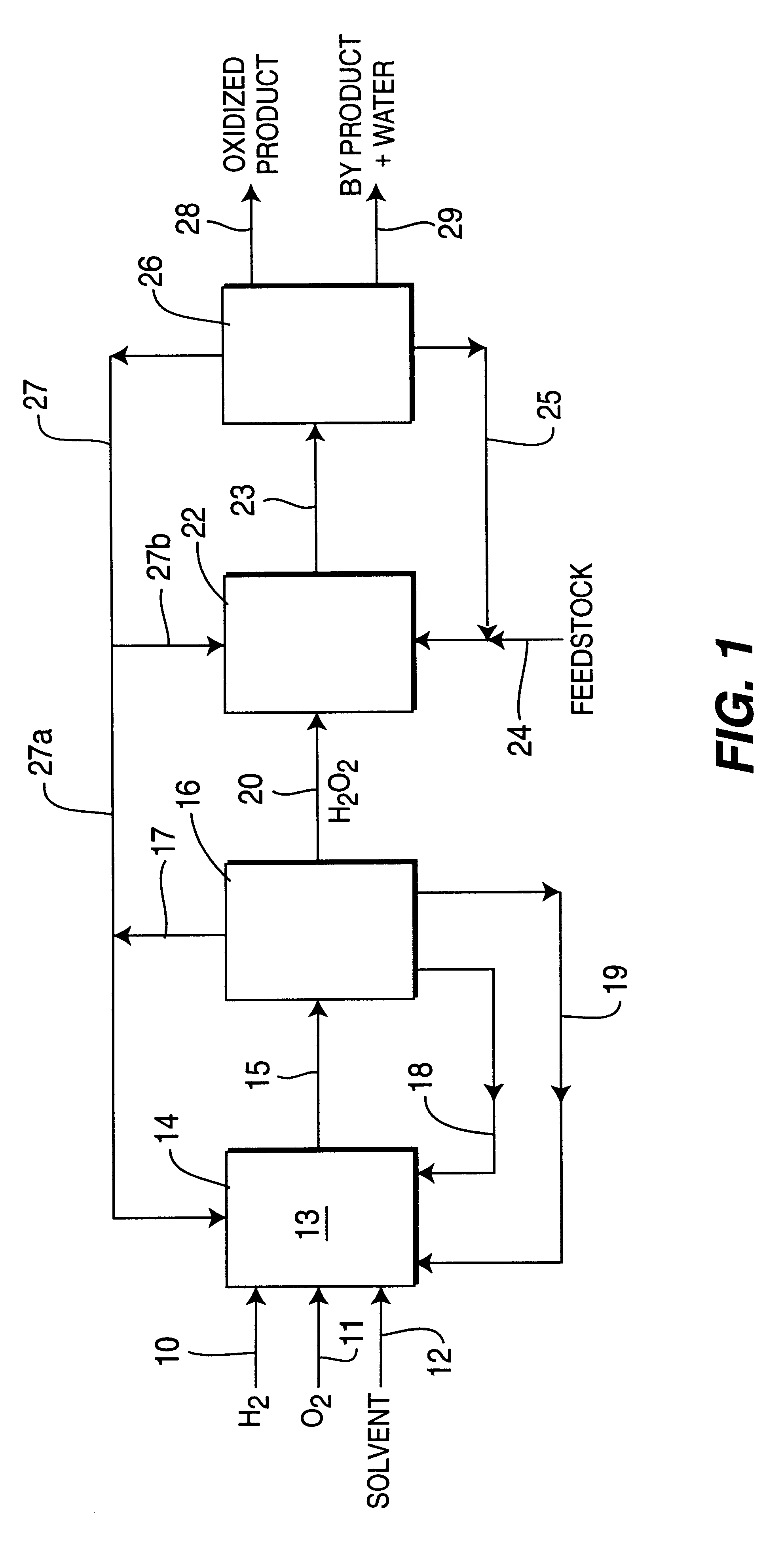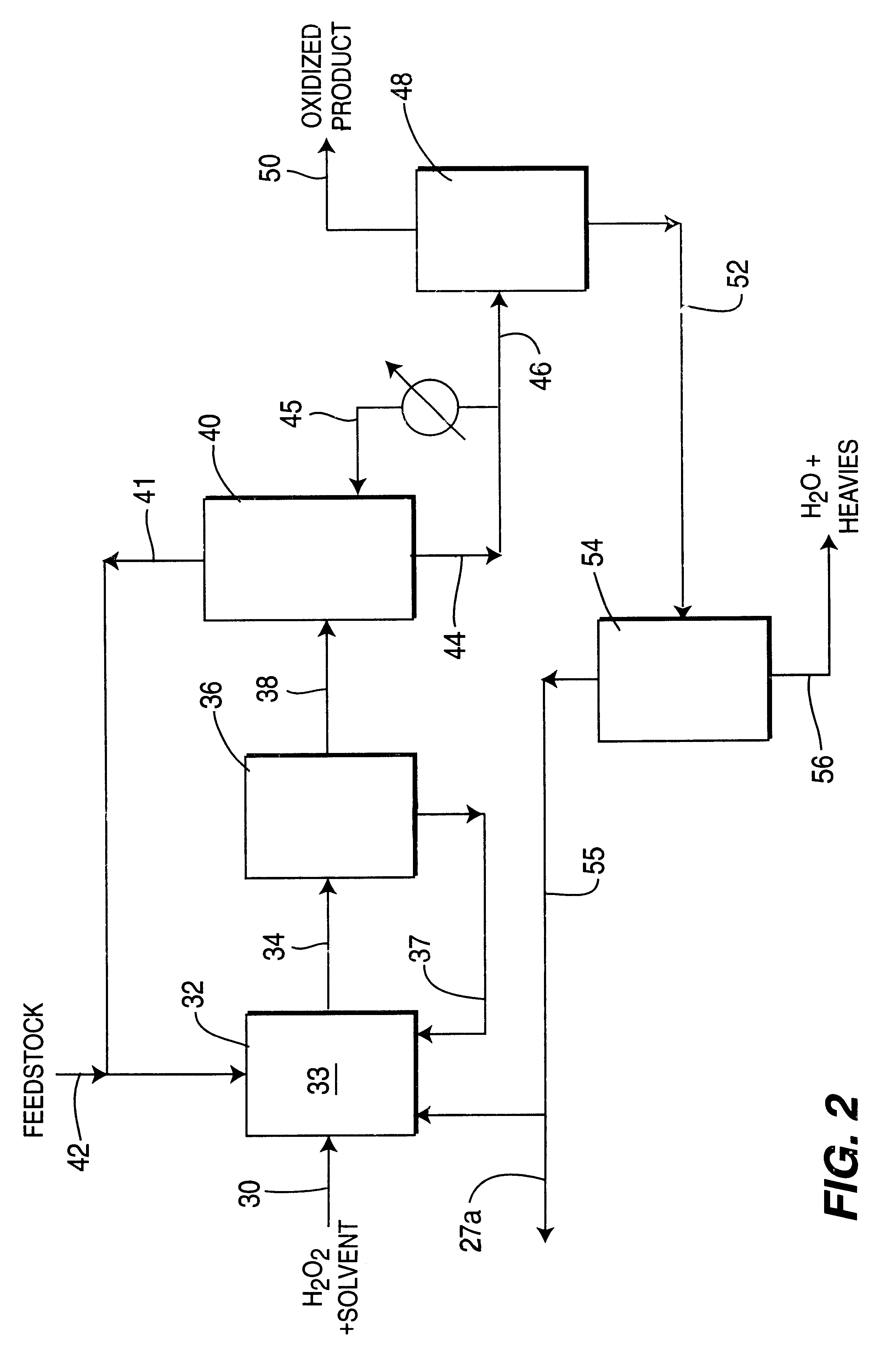Process for selective oxidation of organic feedstocks with hydrogen peroxide
a technology of organic feedstocks and hydrogen peroxide, which is applied in the direction of catalyst activation/preparation, metal/metal-oxide/metal-hydroxide catalysts, physical/chemical process catalysts, etc., can solve the problems of high cost of purified oxygen, large capital investment and operating costs, and many significant problems of conventional catalytic oxidation processes. achieve the desired oxidized product yield, reduce the cost of hydrogen, and reduce the effect of hydrogen demand
- Summary
- Abstract
- Description
- Claims
- Application Information
AI Technical Summary
Benefits of technology
Problems solved by technology
Method used
Image
Examples
example 1
0.25 grams of 0.7 wt. % Pd / carbon black catalyst was suspended in 75 ml of 1 wt. % sulfuric acid aqueous solution with 5 ppm NaBr. Reaction was conducted in a 1-liter glass-lined autoclave reactor in a semi-batch mode with continuous gas phase, and slurry including catalyst, reaction solution and product were maintained at 45.degree. C. temperature and 1,000 psig pressure in the reactor during the reaction period. 3% H.sub.2 in air was continuously fed into the reactor at 1 liter / minute. After 6 hours at the reaction conditions, the liquid phase was separated from the catalyst by filtration. The resulting product was analyzed by titration with potassium permanganate and 2.8 wt. % H.sub.2 O.sub.2 was obtained.
example 2
Conditions same as for Example 1, except with 0.5 grams Pd / carbon black catalyst and 50 ml aqueous solution at 1,400 psig pressure. After 3 hours reaction time, 4.2 wt. % H.sub.2 O.sub.2 was obtained.
example 3
Conditions same as for Example 1, except at 1,400 psig pressure and water solvent was replaced with methanol. After 2 hours reaction, 4.1 wt. % H.sub.2 O.sub.2 was obtained.
PUM
| Property | Measurement | Unit |
|---|---|---|
| pressure | aaaaa | aaaaa |
| temperature | aaaaa | aaaaa |
| pressure | aaaaa | aaaaa |
Abstract
Description
Claims
Application Information
 Login to View More
Login to View More - R&D
- Intellectual Property
- Life Sciences
- Materials
- Tech Scout
- Unparalleled Data Quality
- Higher Quality Content
- 60% Fewer Hallucinations
Browse by: Latest US Patents, China's latest patents, Technical Efficacy Thesaurus, Application Domain, Technology Topic, Popular Technical Reports.
© 2025 PatSnap. All rights reserved.Legal|Privacy policy|Modern Slavery Act Transparency Statement|Sitemap|About US| Contact US: help@patsnap.com


